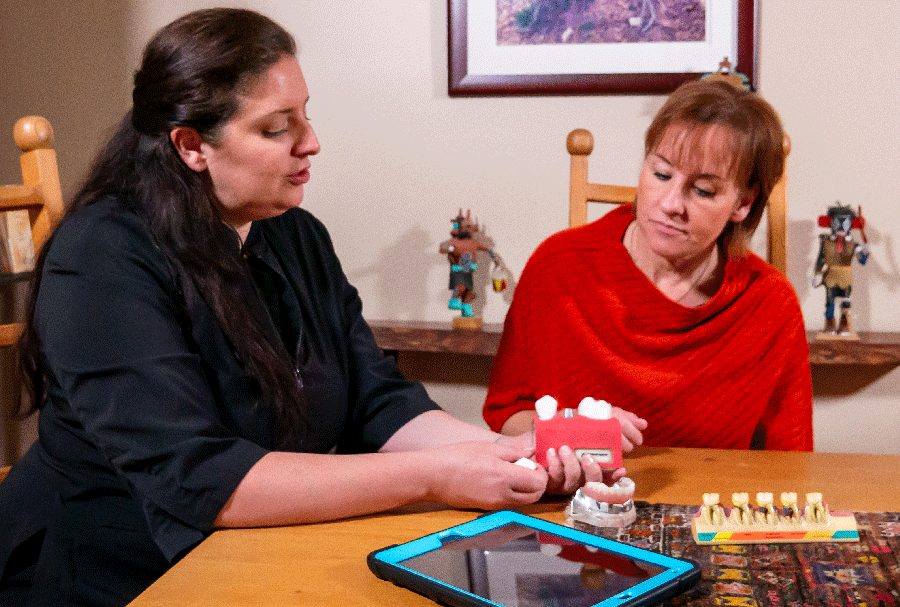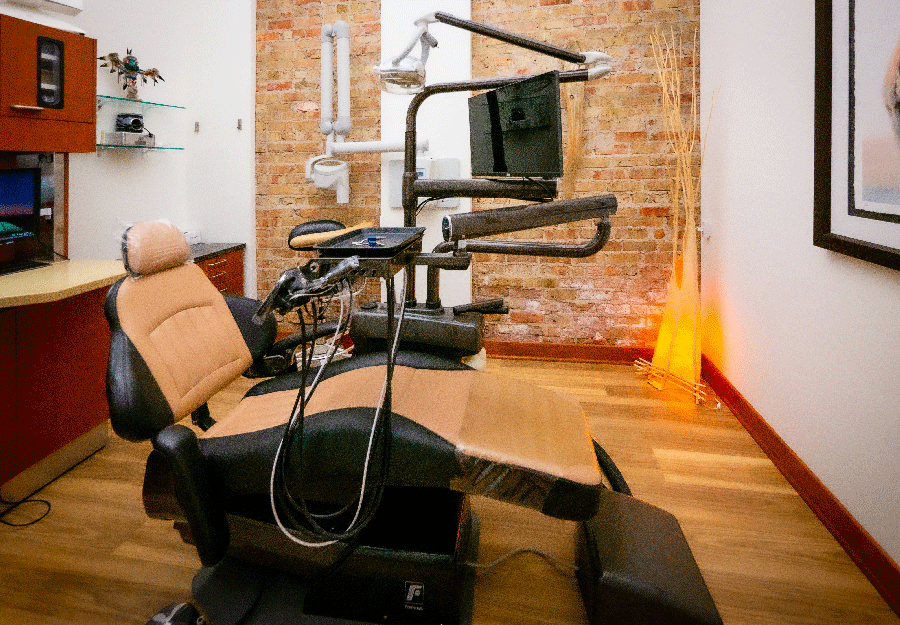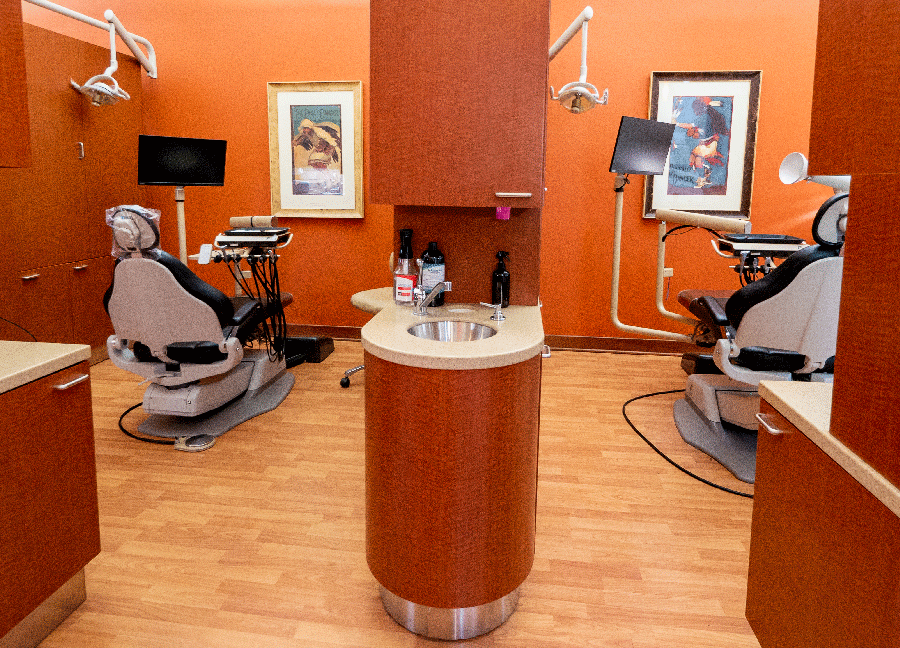Answering Surgical Questions
Surgery doesn’t have to be intimidating. On those occasions when it is necessary, we will take the time to enlighten you from the initial process all the way through the necessary postoperative hygiene routines to ensure a successful result. Trust us.

General Surgical Questions
Is there going to be a lot of swelling?
The amount of the swelling is dependent on the type of surgery we are performing. In general, you can expect moderate swelling to last three to four days.
What are my limitations when eating? Are there food I should avoid?
For the first few days, we recommend a soft food diet. You should avoid eating on the surgical side. You should avoid any “hard” food (e.g., chips, nuts, etc.) or fruits containing small seeds.
Can I brush and floss in that area?
We advise patients to brush as close to the surgical site as comfortable with a soft toothbrush for the first few days following surgery. Immediately after surgery, an electric toothbrush can be used anywhere except the surgical site. If you feel comfortable, it’s safe to brush or floss as normal a few days after the procedure. Any exceptions to this general rule will be discussed with you after surgery.
How much pain will I be in?
During the procedure, you will experience absolutely no pain as you will be under the effects of a local anesthetic such as Novocain. Dr. Hosters is very adept at providing injections as painlessly as possible and subsequent to receiving the anesthetic, your procedure should be completely painless even to the moment when you are walking out of our office.
Is he going to prescribe medications for the pain?
Typically, Dr. Hosters prescribes an analgesic (pain medication) and an antibiotic after most dental procedures. On occasion, if the procedure is very routine and noninvasive, Dr. Hosters may not prescribe an antibiotic but this is dependent upon the complexity of the procedure. The vast majority of his surgical procedures do require an antibiotic and pain medication which will be prescribed as he reviews post-surgical instructions with you in a relaxed setting.
Am I going to be put to sleep for this?
The vast majority of the surgical procedures performed by Dr. Hosters can be successfully completed with just a local anesthetic such as Novocain. On occasion, a patient will request to be given IV sedation and have the procedure performed under a “twilight sleep”. This is rare and probably accounts for 3-4 procedures of the 100s that Dr. Hosters completes each year.


Surgical Procedure Questions
What is the difference between a surgical and non surgical extraction?
A nonsurgical extraction is one in which a tooth can be removed without opening the gum tissue to get greater access to facilitate the removal of the tooth. These are typically very routine extractions which require less than 10 minutes of actual procedural time. A surgical extraction is more complex and is typically performed on teeth that have broken or are extensively decayed thereby preventing the routine removal with basic forceps. Dr. Hosters is oftentimes required to open the gum tissue to gain greater access to the tooth structure underneath the gum line. Both procedures will be painless, but a surgical extraction requires more expertise and more time in order to remove these teeth.
Why do I need a bone graft?
When an individual loses a tooth, the natural process of healing involves bone atrophy whereby the actual thickness of the bone decreases with time when the support of the tooth is no longer present. If the remaining bone volume is in adequate to receive the appropriately sized implant, then Dr. Hosters must add bone to increase the thickness in order to place the implant. It is essential that the implant to be placed entirely within healthy bone in order to provide adequate support for a crown or the implant may fail under the normal stresses placed upon it when chewing. A bone graft is only supplied when the existing bone volume is in adequate for routine dental implant placement.
Healing times for various procedures
Implant placement in virgin bone for upper jaw 8 weeks, for lower jaw 6 weeks.
Implant placement and extraction of the tooth-12 weeks
Extraction of the tooth and bone placement 16 weeks
Sinus elevation 6 months
Soft tissue graft 6 weeks
Crown lengthening 6 weeks
Bone graft around the tooth or implant 8 weeks
Bone graft to increase the thickness of the arch 6 months
Gingivectomy 4 weeks
